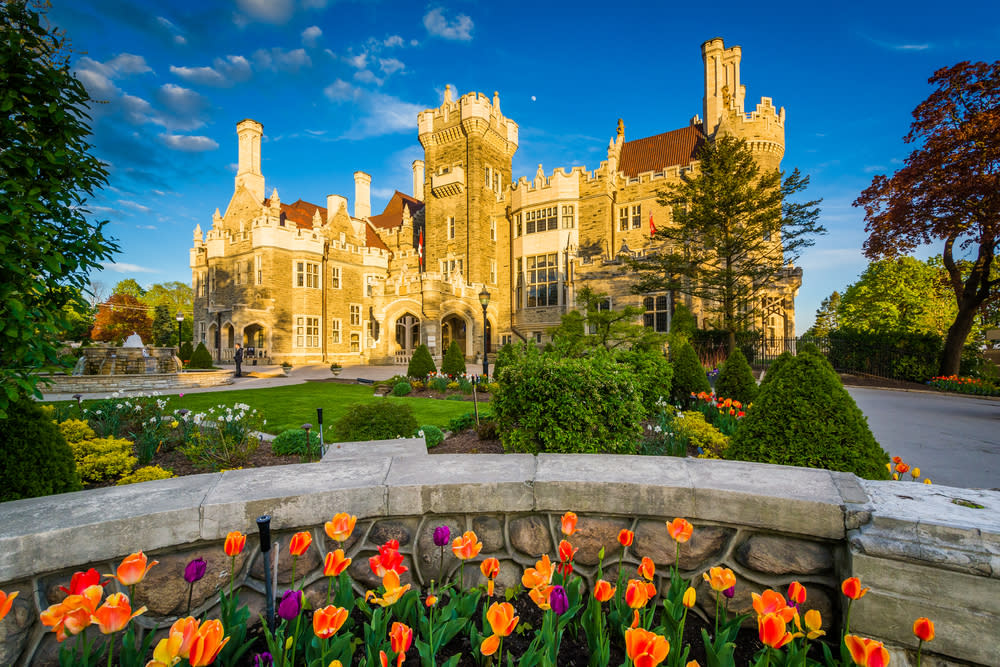More from Toronto
Main Menu
- 00:00
- 06:00
- 12:00
- 18:00
- 23:00
Toronto : Next 24-Hour Weather
Tomorrow - 13th December 2025
Sunrise 07:43
Sunset 16:41
Tomorrow - 14th December 2025
Sunrise 07:43
Sunset 16:41
Holiday Weather Now
Sorted by popularity:
Updated at 04:00 GMT
-
Temp feels like-13°C9°F
-
Length of day08h 58m
-
Pressure30" (1017 hpa)
-
Visibility14 km (8miles)
-
Wind speed25 km/h
Sunrise 07:43
Sunset 16:41
-
Temp feels like:
-13ºC (9 ºF)
-
Length of day:
08h 58m
-
Pressure:
30" (1017 hpa)
-
Visibility:
8 miles (14 km)
-
Wind speed:
25 km/h
Weather Toronto
With a mild semi-continental climate, Toronto is warmer than more northerly regions of Canada. Summers are warm, even hot and winters are cold. Low-to-moderate rain is consistent throughout the year.
A city on Lake Ontario in the province of Ontario, Toronto is similar in latitude to Bordeaux and Milan and enjoys comparable weather.
Summer Weather in Toronto
From June to September, Toronto is pleasantly warm and has more humidity than other regions of Canada, with rain increasing near the season's end. Over June, the average high temperature rises from 22°C to a peak of 25°C, falling to 24°C in August and down to 20°C in September.
Thanks to the effect of Lake Ontario, Toronto enjoys summers that are cooler than other areas of Canada. Evening temperatures can be chilly at the beginning and end of the season, but quite comfortable in the middle period. From July onward the lake is warm enough for swimming and southwest winds make it perfect for sailing.
Autumn Weather in Toronto
Toronto rapidly cools in October and November. The average high temperature drops to 13°C in October and to 7°C in November. The average low drops to 7°C in October and 2°C in November.
Winter Weather in Toronto
When Does It Snow In Toronto?
While not snowbound like other parts of Canada, Toronto is cold and sees moderate snow from December to February. The average high drops to -1°C in January and February, while the average low is below freezing for the entire season: -4°C in December, -8°C in January and -7°C in February.
Does Lake Ontario Freeze?
Lake Ontario's surface usually freezes but its great depth prevents a complete freeze. The sky is often grey as the sun only comes out for an average of two hours a day in December, three in January and four in February.
Spring Weather in Toronto
From March to May cool weather gradually turns warm. The average high temperature rises above freezing to 4°C in March, 10°C in April and 16°C in May. Evenings remain cold, below freezing in March, and cold winds often blow in from the lake to make it feel much colder.
Snow often thaws at the start of spring but the area has experienced early thaws in February. The sun slowly returns but the lake remains far too cold for swimming.
Rain in Toronto
Much of Toronto's annual rainfall occurs from July to September. The early months of summer are the year's sunniest and rainfall is, as always, quite low.
Precipitation falls in light showers on about ten days in each month. August and September are the wettest months and have seen occasional thunderstorms. Hurricanes are rare but have happened in autumn.
Extreme Weather In Toronto
With the moderating effects of Lake Ontario and a southerly location compared to the rest of Canada, Toronto rarely sees extreme weather. But it can get hit by severe cold snaps. Between December and February, temperatures have fallen to a low of -20C.

















